Fishing The Wall: Pitchin’ the Ultimate Saltwater Riprap
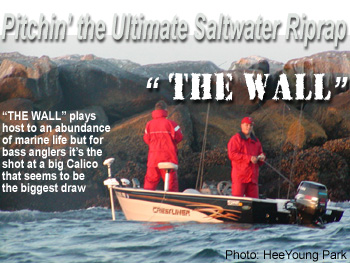 The Long Beach Breakwater better known as “The Wall”, is a unique fishery in and of itself. Situated within such heavy industry and shipping traffic, it seems almost foreign to be catching bass while several thousand-ton super freighters slide eerily by in the darkness. If you talk to someone about fishing the wall at night, you generally will get one of a few responses like, “I have a friend who fishes it”, or “ Man, I’ve lost some big fish on that thing.” And if you have spent any time out there, you’re probably one of the later. This type of fishing is definitely not for everyone, but if you can make the adjustment to the “night life”, you may just find yourself pitchin’ to the rocks in the dark. Spanning more than eight miles from Cabrillo Beach in San Pedro across to Long Beach, the San Pedro Breakwater, as it was originally named, dates back more than one hundred years. Using mostly quarry rock barged over from Catalina Island, the original breakwater construction began in 1899. In 1932 work began on the 3.5-mile “middle” extension. Then in 1941 construction began on the 2.5-mile eastern leg of the breakwater. Work stopped in 1943 due to World War II and didn’t resume until 1946. The extension was finished in 1949.
The Long Beach Breakwater better known as “The Wall”, is a unique fishery in and of itself. Situated within such heavy industry and shipping traffic, it seems almost foreign to be catching bass while several thousand-ton super freighters slide eerily by in the darkness. If you talk to someone about fishing the wall at night, you generally will get one of a few responses like, “I have a friend who fishes it”, or “ Man, I’ve lost some big fish on that thing.” And if you have spent any time out there, you’re probably one of the later. This type of fishing is definitely not for everyone, but if you can make the adjustment to the “night life”, you may just find yourself pitchin’ to the rocks in the dark. Spanning more than eight miles from Cabrillo Beach in San Pedro across to Long Beach, the San Pedro Breakwater, as it was originally named, dates back more than one hundred years. Using mostly quarry rock barged over from Catalina Island, the original breakwater construction began in 1899. In 1932 work began on the 3.5-mile “middle” extension. Then in 1941 construction began on the 2.5-mile eastern leg of the breakwater. Work stopped in 1943 due to World War II and didn’t resume until 1946. The extension was finished in 1949.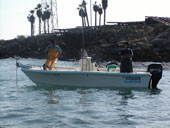
Team “Reckless” Ben Florentino, Eric Neiman staging for the Final round at Pier J.
The Wall plays host to an abundance of marine life, but for bass anglers, it’s the shot at a big calico that seems to be the biggest draw. Bass fishing on the wall is nothing new; my father used to fish it back in the 1950’s. “We used to use black pork on a lead head and catch ‘em pretty good”, he says.
They would use an oar to push themselves off the rocks at night as they drifted along the inside, guess you could call that an early trolling motor. I’m not sure what the biggest bass ever taken off the wall is, but I have seen pictures of double digit fish taken in the late eighties and early nineties. Everyone has a story of a “Wall” fish. So here’s a collection of 5 ideas that may help take some of the guess work out of this unique fishery, and get you started using an effective technique known as Pitchin’.
#1 Conditions
If I had to pick one element that can make or break this place, it would be swell. Swell gets water moving in and out of those rocks. This, in turn, pushes baitfish and forage around and gets the whole food chain going; however, be aware of too much water movement. Too much movement and the fish tend to hunker down and seek refuge. In the wintertime we typically get west and northwesterly swells, and during the summer months, we have traditional south and southwesterly swells. These swells will hit different stretches of the breakwater with varying degrees of intensity, which is based on swell direction.
As the winter west swells bend and wrap around Point Fermin to the west, they tend to swing in and hit the upper portions of the wall stronger. During the summer, we get the steep south swells, and the lower Long Beach section up to around “the V” catch a lot of swell energy. In the spring and fall seasons, we get combo swells. This is when the fishing can get really good. If you are unfamiliar with swell direction, go to a NOAA website and look up some of the weather buoys. Get familiar with relationships between swell directions and locations on that wall, and you’ll begin to see what I’m talking about. Things like watercolor and temperature are still important variables, but these seem to follow more typical patterns with one exception, red tide. This is semi-regular occurrence on the wall, where plankton blooms create a bioluminescence in the water. As your line is pulled through the water, the water immediately surrounding your line will illuminate, creating a lightning bolt effect with every twitch of the rod. Generally, fishing is slow in heavy red tide areas, but pay attention because sometimes it’s only a few feet deep. As a starting point, I try to find edges just outside it.
Team “Explorers” Craig Bark, Don Castro fishing outside the Federal Breakwall in their 14′ Western.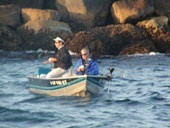
#2 Equipment
Just like any other sport, everyone who fishes has his or her own unique style. Tackle and equipment is no different. As a general guideline. Most folks who pitch the wall like to use a graphite rod in the 7 to 8 foot range, with 7 ½ feet probably being the most versatile. The closer one fishes to the rocks, the shorter the rod needed and vice versa. The rod should be able to handle 20-30 lb. test line easily. I prefer a 7’6” Flipping’ stick designed for freshwater bass fishing. A flipping stick is a powerful rod with a parabolic bend, and this works well for a few reasons. When pitchin’ the wall, you’ll rarely be more than 20 feet from the rocks, and sometimes I’ll fish as close as 5. With heavy line the rod acts as a shock absorber when you set the hook hard. For example, say you pitch you’re lure in and get a good bite right in the rocks. With an extra fast tapered rod, there is no give, so if your line is nicked, or it’s over the top of the barnacle and mussel encrusted rocks, you’re done, many times before the rod has ever loaded. You’re really trying to lift the fish out of the rocks instead of snapping them out. The parabolic bend of a Flipping stick keeps the sudden jolt from breaking the line, acting sort of as a dampener. It’s up to you to keep the fish coming towards the boat by reeling and lifting. Most of the Bass you will catch don’t justify the 20 to 30 lb. test on their own, but the environment they’re in won’t let you get away with much less. As far as reels go, I prefer a low profile version that has a Flipping switch, which allows me to disengage the reel and reengage it with my thumb without ever having to turn the handle.
“When pitchin’ the wall, you’ll rarely be more than 20 feet from the rocks, and sometimes I’ll fish as close as 5.”
#3 Technique
Ok, so you know what to look for, and you’ve got the right set up, but how the heck do I pitch cast? Pitchin’ is basically an underhand pendulum cast developed from the flipping’ technique used in freshwater bass fishing. The easiest way to learn is at home. Stand up on a milk crate to simulate boat height off the water. Let out line so your lure is approximately 10 inches above your reel. Hold the lure in your hand close to the rod with the reel in free spool. The idea is to shoot the lure with the rod as the lure falls in a pendulum motion. Let go of the lure as it approaches the bottom of its arch, and push it forward with the rod tip while simultaneously releasing the spool. The idea is to shoot the lure low to the water with little effort. Why pitchin’ you ask? This technique allows for pinpoint presentations to targets on the wall. It takes very little effort to pitch as apposed to traditional casting. It also saves a lot of time, meaning you can keep the lure in the strike zone much longer because you are making many more presentations. It also keeps a lot of the slack out of the line throughout the process, so when you get a bite right as the lure hits the water, you are in a much better position to set the hook.
I really like to pitch because I can make a much softer landing in the water, which prevents spooking fish that may be either real shallow or are right next to where the jig lands. If this technique is foreign to you, have a friend give you a few pointers or stop by a tackle shop to get the basics down then go practice. Believe me, the time you spend at home will make your time on the water that much better.
#4 Lure selection and presentation.
When it comes to pitchin’ the wall, I try to keep with the basics and expand upon those as the night progresses. Some of the more popular lures are the traditional skirted twin-tail and single tail grubs, with a lead head that has some sort of weed guard, in 3/8 to ¾ ounce sizes. The weed guard helps deflect rocks, muscles, weeds and kelp encountered along the wall. I prefer the stiffest weed guards made and have had no problems with them interfering with a hook set.
I also tie my own jigs with rubber skirt material that flares and pulsates as the jig is pulled through the water. When selecting a jig head, be sure to choose one that self-rights, meaning as the jig hits the bottom, the hook always lands in the upright position. This will dramatically reduce your loss of lures. I prefer an Archy-shaped jig that has a shovel-shape and tends to glide its way down. Some others that work well are football-shaped heads, along with banana-shaped jigs. Also, select a jig that has a stout hook, which can easily be re-sharpened. You will occasionally roll the tip of your jig in the rocks and will need to dress it back up with a file. As I mentioned earlier, twin tail trailers work well, but sometimes the fish seem to want more of a “do nothing” type of bait. For this, I keep a tray full of plastics crawdad- type baits and plastic pork chunk-type trailers used for freshwater bass jig fishing. If you notice, I have referenced freshwater bass fishing more than once, and it’s not by coincidence. Many of the lures you will be using out here at night will have originated from the Black Bass fisherman, so get creative and try new things. I try to keep colors limited to about five basics including: browns, greens, purple,
“Ever notice how a Bass pulled out the kelp beds looks a lot different than one out of the rocks? It’s the same thing for forage. They match their surroundings to blend in.”
Chartreuse/black combo, and a clear blue color. If there is an influx of red crabs, I’ll include some red baits as well. I use a little different approach than most when selecting a color. I look at the water and select a bait that seems to look like it belongs in that color water. This, as apposed to trying to always match the hatch, seems to give me a good starting point. Ever notice how a Bass pulled out the kelp beds looks a lot different than one out of the rocks? It’s the same thing for forage. They match their surroundings to blend in. One exception is the old chartreuse/black combo, and I still haven’t figured that one out yet. It might just be the contrast that drives them nuts.
#5 Putting it all together
Now you’re all dialed in on equipment, tackle, and what to look for, so it’s time to give it a go. Try showing up before sunset because the last evening light can be an awesome time to catch big fish on the wall. Set yourself up on an area and start to observe the conditions mentioned earlier. This is the time to change lures more frequently in order create some sort of preferred presentation for the night. If you have a trolling motor, don’t be afraid to kick it up a notch or two to cover some water. Get your pitch cast going, and try varying your retrieve. The weight of your jig will do a lot of this for you; sometimes they want the slower fall of a 3/8-ounce setup, and other times they need to be coaxed with the rapid fall of a sinking ¾ ounce, almost triggering a reaction bite. Once you get bit, verbalize with your partner about what just happened. This does a couple of things. For one, it forces you to hear yourself describe a bite and begins to paint a mental picture of what the fish are doing. Next, it gets your partners head in the game, and we all know two heads are better than one!
Let the bass tell you what they want. A lot of information is transferred up the line every time you get a bite. It’s up to you as to whether or not you take that info and do something with it. As you pitch that jig in there, try to let the lure fall on a controlled, slack line. You want the lure to fall as freely as possible while still being able to detect a strike. The bigger fish will feel like a small static shock you would get when touching something metal, only it’s through your line instead of your finger tips. Once you feel that “thump”, drop the tip of the rod to take up any slack with the reel and swing ACROSS your body. Don’t give the usual 9 o’clock to 11:00 hook set! 
Get down and sweep it from 6:00 to 12:00 and move the fish along with that line. Once you get that rod loaded, don’t drop the rod tip until you have wound down hard and can keep maximum pressure on the fish. Using a short pump and wind technique, keep the pressure on the fish until they clear the rocks. I see people set a good hook only to drop their tip to wind-up slack line, bad move. These fish seek shelter in the rocks as soon as they are hooked, so keeping them moving towards the boat is very important. I have hooked fish thinking, “It’s just a 2 pounder”, and as I lighten-up, the fish gets it’s head going the other direction, and next thing you know, I’m cutting off 3 feet of shredded line and retying a new lure.
A few last words on safety.
Because of the nature of the area, it is very important to keep a sharp eye out for floating debris that can cause serious damage to your boat and other vessels as well. Some of these ships move a lot faster than they appear. Do not try to out race any of them. YOU WILL LOSE! This is an area of big business, where time is money.
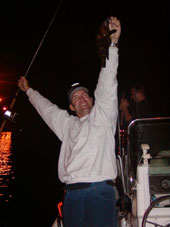 Tugboats and freighters are always moving around quickly, and they push a lot of water and throw big wakes. I like to wear SOS-penders (a self-inflating life jacket) at night. Although I am a good swimmer, I ‘m not going to be doing the backstroke for very long with deck boots and foul weather gear on, so be smart. Keep your speed to a minimum to allow for corrections as you travel at night, and be aware of your surroundings at all times!
Tugboats and freighters are always moving around quickly, and they push a lot of water and throw big wakes. I like to wear SOS-penders (a self-inflating life jacket) at night. Although I am a good swimmer, I ‘m not going to be doing the backstroke for very long with deck boots and foul weather gear on, so be smart. Keep your speed to a minimum to allow for corrections as you travel at night, and be aware of your surroundings at all times!
Remember, this is a great fishery, but don’t keep the bass off the wall. Although it’s a rich and healthy environment, these fish are exposed to elevated levels of contaminants and other forms of pollution. There are much better places to get a meal but not many better places to pitch to Calico Bass!
By Paul Bendah


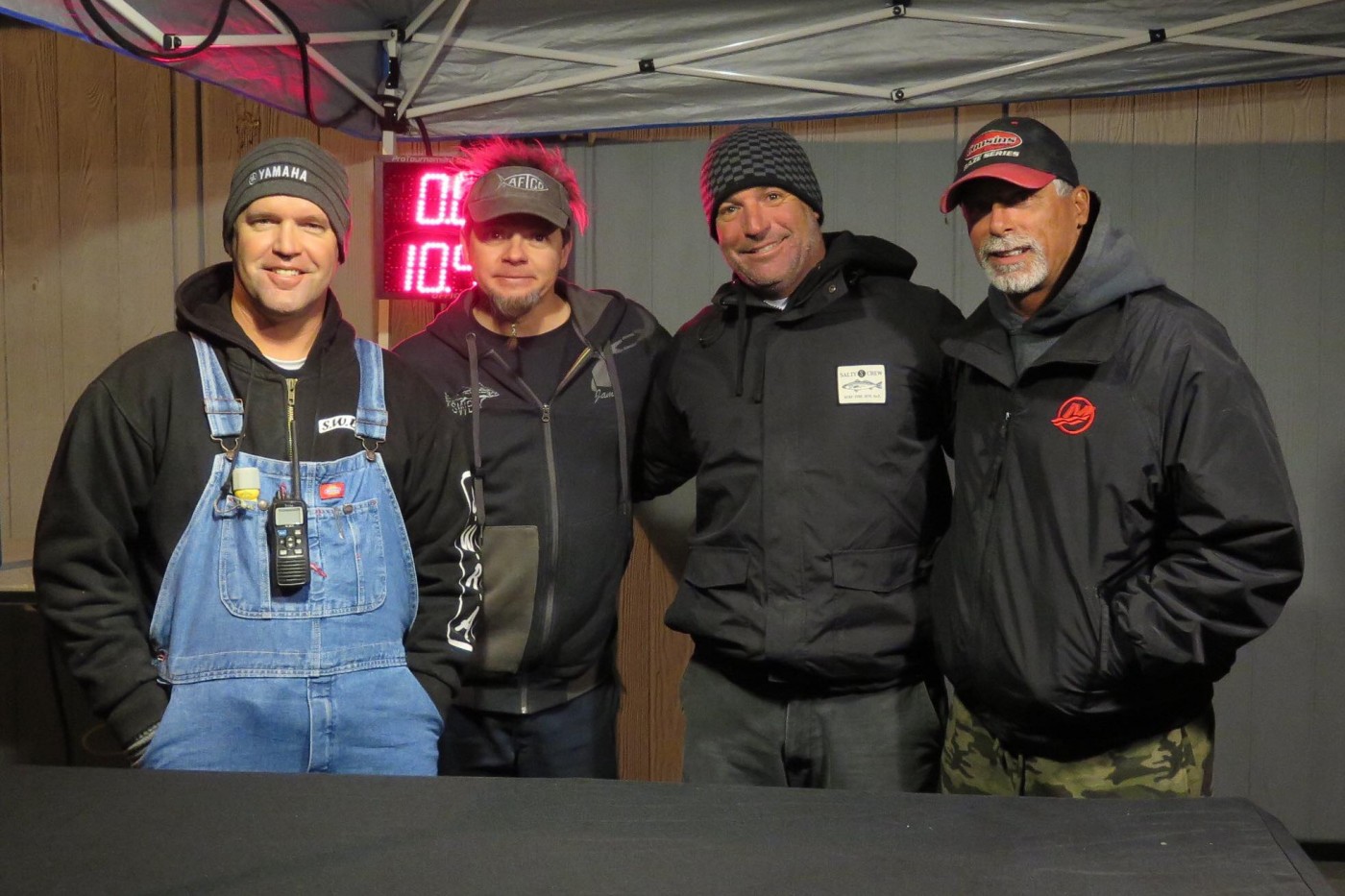

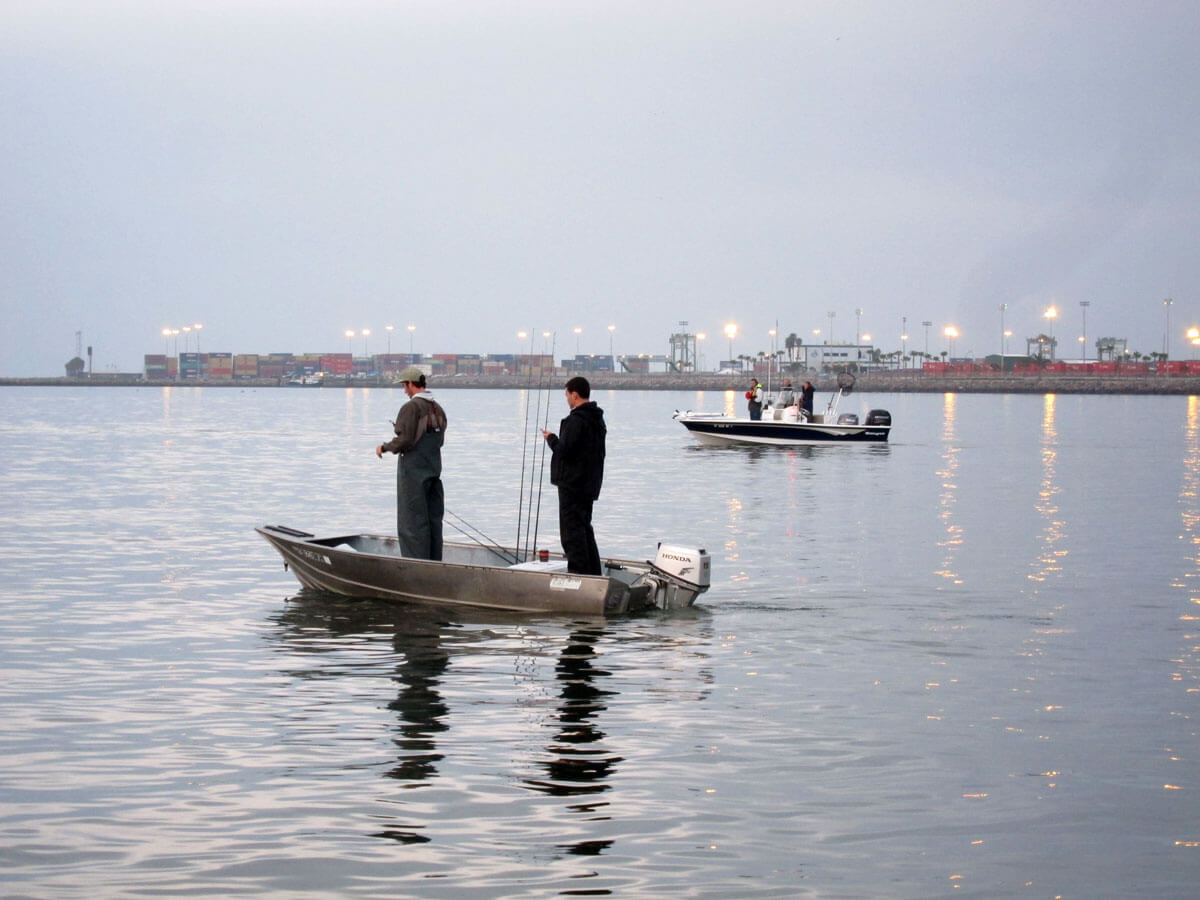
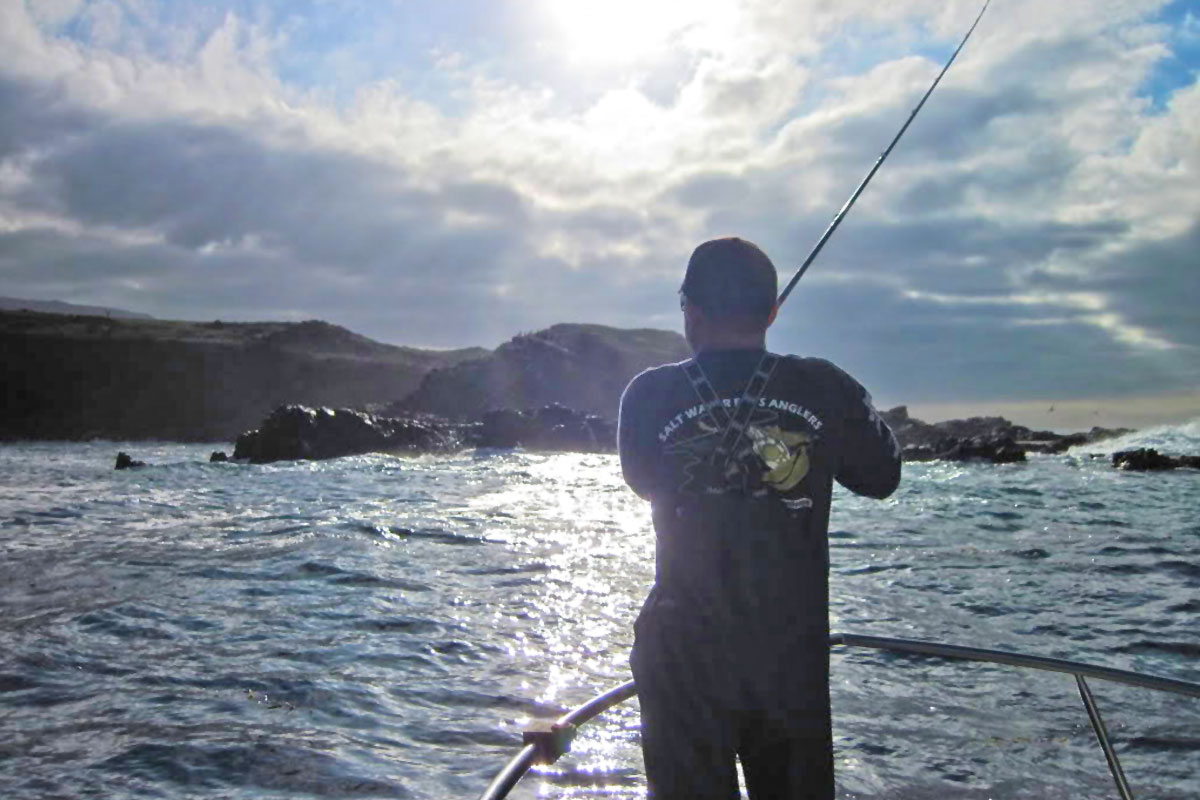

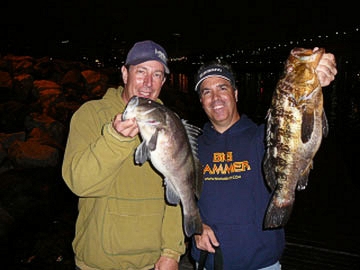









Got something to say?